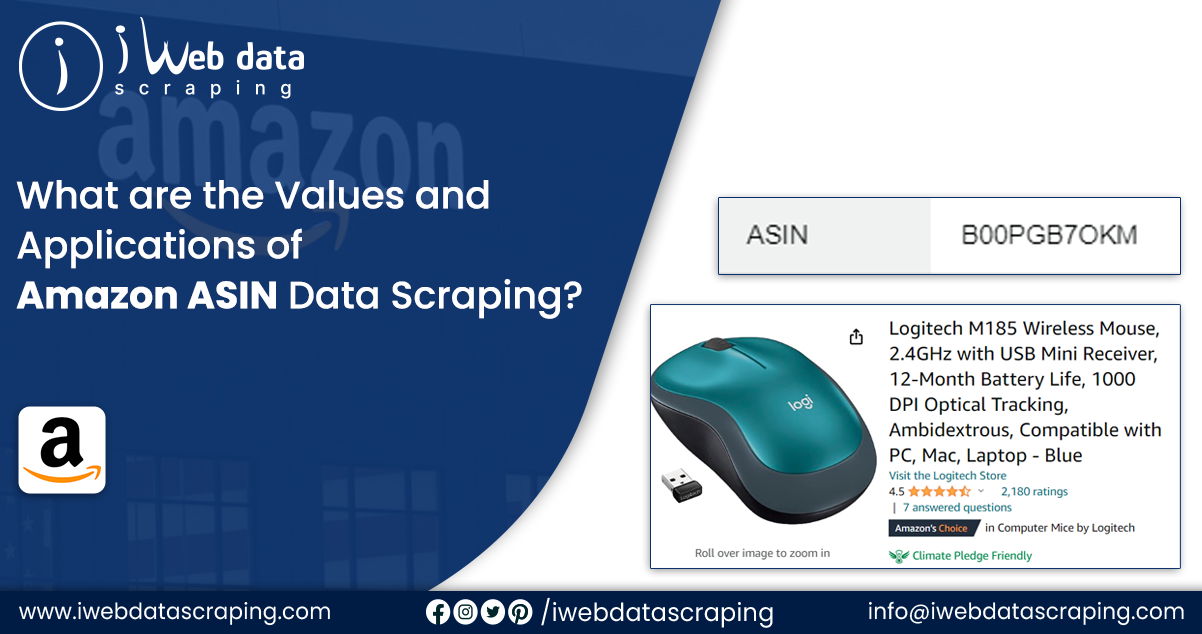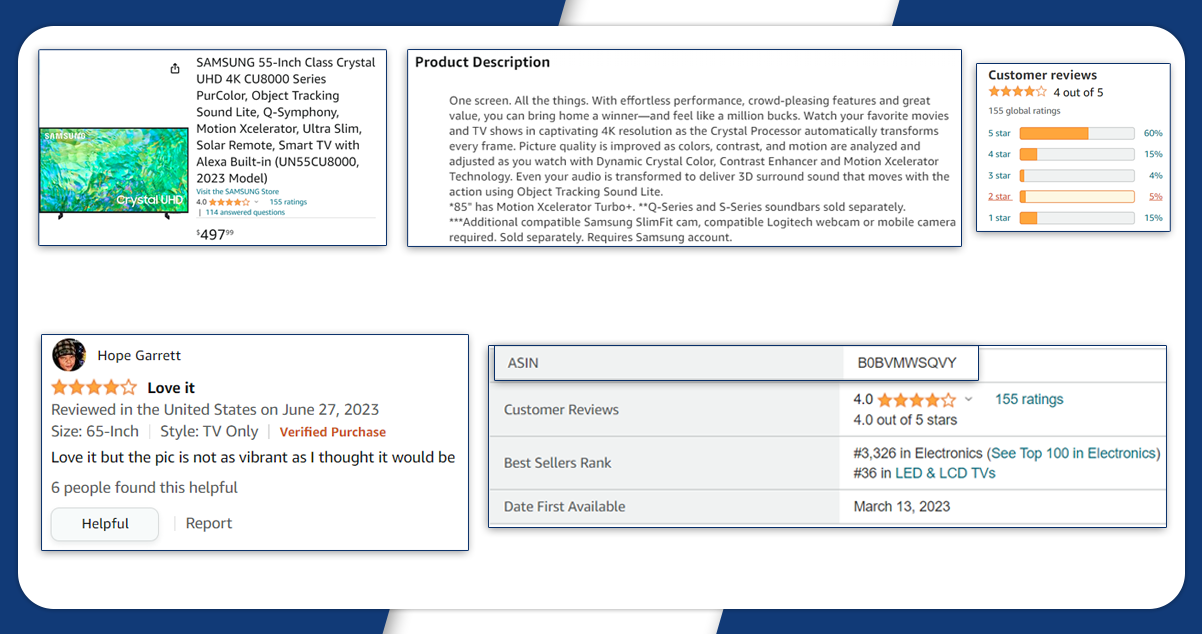
Amazon, the largest e-commerce corporation in the United States, provides an extensive array of products worldwide. Its product data holds immense value and are helpful in various ways. Extracting this data through web scraping can be a highly beneficial approach. This guide aims to assist you in developing an effective strategy for extracting product and pricing information from Amazon. By utilizing web scraping tools and employing clever techniques, you will gain the proficiency to gather the desired data efficiently.
Web scraping to extract Amazon data facilitates competitor price research, real-time cost monitoring, and the identification of seasonal trends, enabling businesses to offer consumers better product deals. By employing Amazon ASIN Data Scraping techniques, you can retrieve pertinent data from the Amazon website and store it in a spreadsheet or JSON format. Moreover, automation updates the data on a weekly or monthly basis regularly.
Exporting product data directly from Amazon to a spreadsheet is currently not supported. However, web scraping offers a solution to this challenge. Whether you require data for competitor analysis, comparison shopping, creating an API for your app project, or any other business requirement, web scraping Amazon data can effectively address your needs.
Although Amazon product data scraper has innumerable benefits, here we have listed the most common ones.
Scraping data from Amazon has become a captivating business opportunity, with numerous companies providing specialized solutions for product analysis, price monitoring, and more. Yet, extracting data on a large scale from Amazon poses challenges due to their robust anti-scraping technology, making the process intricate.

ASIN stands for Amazon Standard Identification Number. A unique alphanumeric identifier is available for each product listed on Amazon's marketplace. ASINs help in accurately identifying and locating specific products on the platform. Every product listed on Amazon receives a distinct ASIN, differentiating it from other products, even with similar names or descriptions. Amazon's internal systems use ASINs to manage inventory, track sales, and facilitate product searches. Additionally, sellers, researchers, and developers often use ASINs to retrieve specific product information and integrate with Amazon's APIs for various purposes.
Sellers often scrape ASINs from Amazon for various purposes, and some everyday use cases are:
Scraping Amazon ASIN product data involves several steps. Here is a general outline of the process:
Identify the Target ASINs: Determine the specific ASINs or product categories for which you want to scrape data.
Choose a Web Scraping Tool: Select a reliable web scraping tool or library that suits your programming language or platform. Popular options include BeautifulSoup (Python), Selenium (Python/Java), or Puppeteer (JavaScript).
Set up the Scraping Environment: Install the necessary dependencies and configure the web scraping environment. It may involve setting up a virtual environment, installing the required libraries, and configuring the web driver (if using Selenium or Puppeteer).
Write the Code: To navigate to Amazon's product pages and extract the desired data. It may include product titles, prices, descriptions, reviews, ratings, images, and other relevant information.
Handle Anti-Scraping Measures: Amazon employs various anti-scraping techniques, such as CAPTCHAs or IP blocking, to prevent automated scraping. To bypass these measures, you may need to use rotating proxies, user-agent spoofing, or implementing delays between requests.
Parse and Extract Data: Use the web scraping tool to parse the HTML structure of the product pages and extract the required data. Store the data in a structured format like CSV, JSON, or a database.
Handle Pagination: If you need to scrape multiple pages of search results or product listings, implement logic to handle pagination and iterate through the pages to extract data comprehensively.
Implement Data Storage and Handling: Decide how you want to store and handle the scraped data. You can save it in a local file, database, or cloud storage for further analysis or integration with other systems.
Test and Refine: Run your scraping code and validate the extracted data. Refine the code as needed to handle any errors or unexpected scenarios.
Respect Website Policies: Ensure that your scraping activities comply with Amazon's terms of service and policies. Avoid aggressive scraping or overwhelming the server with excessive requests.
For further details, contact iWeb Data Scraping now! You can also reach us for all your web scraping service and mobile app data scraping needs